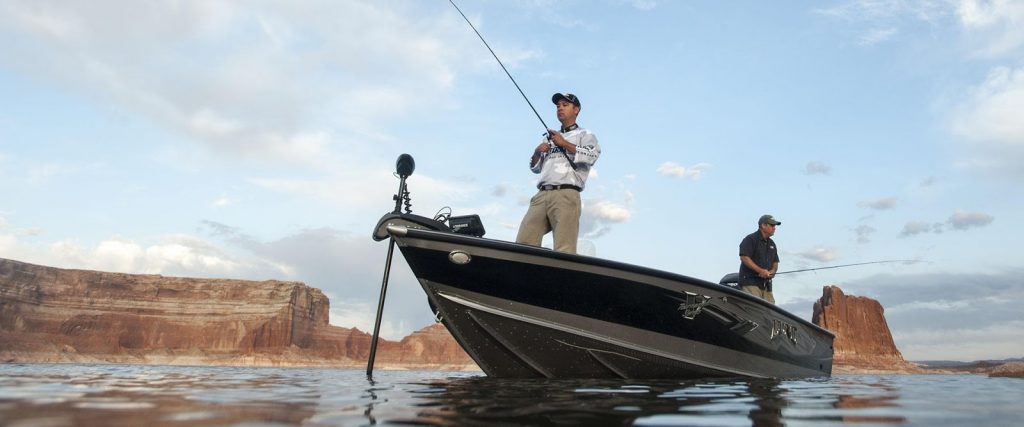People have been catching fish for millennia; originally, because of eating and nowadays, from sports. Fishing is a popular and widespread recreational activity. Above all, it refers that the fishermen should respect and follow the rules, as well as sports fishing ethics. This outdoor hobby is regulated by law, and what must comply with the regulations is certainly the equipment.
Experienced anglers already know what rod, hooks, and the lure of which brands are needed for a particular type of fish. They know there are several methods of catching fish, and many factors that affect the choice of every piece of gear.
More about fishing methods and how each of them requires specific use of fishing tackle read below:
https://en.wikipedia.org/wiki/Fishing_techniques.
Whether you want to catch fish for eating or recreation, you won’t succeed without that right gear. Fishing equipment stores offer an extensive selection of quality equipment from different manufacturers.
After informing about the prices and quality of the brands, you can determine the budget. Anyone can find something for themselves. The price shouldn’t be the only stakeholder, as the most expensive gear doesn’t guarantee success in catching fish. In the paragraphs below, you’ll find a brief explanation of basic fishing tackle, and on what to pay attention when buying.
Choose the Fishing Rod
Rods are one of the accessories whose features and performance have been most advanced thanks to the development of technology. They are now made of state-of-the-art materials and refined for different fishing techniques. The fishing method, location, and the type of fish determine the choice of this piece of equipment.
Two materials predominate in the manufacture of rods – graphite and fiberglass. Fiberglass rods are more flexible and usually longer than graphite ones. They are intended for shallower depths, and for catching smaller fish. On the other hand, graphite rods are stronger and more comfortable to carry. But these rods are very brittle and easy to break. Don’t use them for fishing in rough waters or during stormy weather.
Manufacturers came up with one more division of fishing rods based on where you plan to fish. Two factors will affect your choice – how flexible the rod is and what weight it can carry. So you can decide on light, medium, and heavy fishing rods. Heavy rods are more pliable and intended for large fish, while light and medium rods are used for catching whitefish.
Leer and String
Fishing reel, combined with the rod, it is one of the most expensive pieces of angler’s gear. It is a device used for unwinding and winding nylon carrying the hook and bait on end. Some primary division is on rotary, multiplicative, and stationary reels. The prey type and fishing technique affect this selection, but the most expensive rod is not a guarantee of successful fishing. Besides, you need to know if you need a reel for the rod or the edge of the boat.
Regarding the nylon you roll on the reel, pay attention to its thickness and mass. The distance of your throw will depend on the weight of the fishing line. Heavier nylon (‘braid’) can go further, giving you a great chance to catch bigger fish. Also, nylon of the highest quality will last longer, and the coil replacement time will take much longer than with thin strings.
Choosing Terminal Tackle
Every piece of gear is of some importance for fishing success. But with no terminal tackle, catching fish is impossible. Before people invented fishing rods, they grabbed fish by hand or with the help of simple hooks or spears. Luckily, with modern gear, fishing today is way more comfortable.
The choice of terminal tackle can be quite confusing sometimes, even for professionals. When you check fishing gear reviews and comparisons website for hooks, floats, and lures, you’ll see different types, in various shapes, purposes, and sizes.
The choice of the hook depends mostly on the fish you are catching; they are adapted to the anatomy of the fish head, and there is no universal one. Hooks are one of the cheapest pieces of gear. Even though you buy the wrong ones, you can give a box of fishing tackle to a fellow fisherman or trade it for the ones you need.
As for the float (bobber), beginners should choose extended models. They serve to keep the bait on the water surface despite lousy weather or waves. Also, seeing a bobber moving is a call to action for fishers. The float starts to move when the fish catch the bait, so this is an inevitable part of the gear.
Live or Artificial Baits for Beginners?
Live baits and artificial lures serve to entice the fish to the hook. Worms, larvae, or bugs are excellent live baits because they represent everything that fish usually eat. Most experienced anglers will opt for live bait in most situations, while beginners should use lures (artificial baits). Also, lures are recommended for fishing in stagnant waters, while live bait will attract the attention of fish in fast water flows.
Before purchasing, you have to know the types of baits you need and the types of fish you’re planning to catch. Other things to remember before picking the baits are the location for fishing, river flow or stagnant water; whether it is sunny, windy or calm; whether the fish are moving or stationary, etc. Experienced fishers rely on few artificial types of bait for all conditions and all fish species, but not all are equally effective.
You don’t have to be gifted to catch fish; its success really depends on your effort, experience, and luck. And by experience, we mean quality gear. Certainly, the beginner and seasoned fisherman’s accessories are not the same, as their needs, requirements, and practice are at different levels. Beginners can start with less expensive tackle, until they learn some fishing tricks. When they improve their fishing techniques, each angler will know which type of tackle they need, depending on their affinities and budget.



